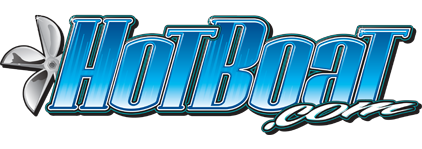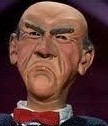Results 21 to 30 of 444
Thread: Prop Shaft
-
02-18-2014, 11:34 AM #21
-
02-18-2014, 11:41 AM #22
-
02-18-2014, 11:44 AM #23
-
02-18-2014, 11:49 AM #24
As much as I don't like the idea of breaking a shaft, the idea of loosing a prop is much worse. We cracked a prop at the season opener in 2012 and by feb had resigned to the idea that the season was toast because we couldn't track down a prop. Luckily Brent from Props West DONATED his time to help use work our way thru getting one into shape, and get us set up with a reasonable working spare as well.
-
02-18-2014, 12:15 PM #25
-
02-18-2014, 01:18 PM #26
-
02-21-2014, 10:04 AM #27Junior Member

- Join Date
- Dec 2013
- Posts
- 21
If there is any force applied to the key you have some issues. The square key is a locational item only. If your prop shaft is properly done there should be a milled flat where the set screws contact the shaft so they can be TIGHTENED to the shaft without leaving scars on the shaft that prevent it from coming apart. If you can tighten 4 set screws and 6 pinch bolts on the shaft AND are driving off the keyway you have problems that need to be investigated. 42 years as a tool and die maker /machinist and the round peg where a square slot should be is wrong on so many levels. The runout from a keyway cutter is of no consequence in the over all scheme of things and was the only way they were done in the good old days. Cutting with an end mill was what guys did when they only had one key to do or didn't have access to a key cutter. You have a square keyway on the output of the v-drive and on the prop shaft and prop, why would I worry about the one end on the prop and coupler. The discussion about have many variables exist in your round key would take another paragraph.
-
02-21-2014, 07:08 PM #28
I think you are on the wrong end of the shaft here sangerdan, I have never, nor do I know anybody that has broken a shaft at the coupler.
My first boat was a 16ft Stevens with a warmed over 350HP 327 making maybe 375HP. The box side of the shaft had no slot in the Halibrand output shaft, and no slot in the prop shaft and no slot in the coupler. Just 2 set screws on each shaft side, and dimples in the shaft, plus the clamping of a 6 bolt coupler on the FULL diameter of the shaft. I never had a problem, UNTIL the shaft sheared on the prop end.
We are primarily discussing the prop end where shaft is taper and does have a key slot. The shaft is not at full diameter, and the length of the unclamped area is half as long as the couple, and the supported by another shaft affixed to the boat, and to top it off, the shaft is NOT under compression, the taper is literally trying to split the prop from the inside out. HUGE DIFFERENCE!
And before you get started on prop fit to the shaft, I will tell you have never seen a shaft yet that fail IN THE PROP. Its always just in front of the prop where the fit means next to ZERO. But has EVERTHING to with how the slot was cut.
I really don't much care how the slot is machined on the coupler side, so long as its not done by some yahoo in his garage thinking about how his income is made by the job turn over.Last edited by gn7; 02-21-2014 at 07:11 PM.
-
02-22-2014, 08:40 AM #29Junior Member

- Join Date
- Dec 2013
- Posts
- 21
Sorry GN I guess I got lost in the drawings, but this is probably worse. Like you said the round key might try to roll if the locking taper wasn't perfect and would have a wedge action. This area would be more critical on the fit and the round key would be a pain in butt to get metal to metal fit. His pic showed a half round key , which would have a +or-and the keyway + or-. These materials are more "gummy" to machine and would be very hard for someone less than a perfectionist to get even a good half-round on a tapered shaft. How would Joe average check fit and location? Keys are keys and dowels are dowels. They mate as well as lions and Bambi. Thanks for clarifying for me GN. Always appreciate your comments and knowledge.
-
02-22-2014, 09:11 AM #30
Don't get me wrong, the who and the how of cutting a keyway is important on either side. Just that topic has some previous history regarding shaft failing, and failing pre-maturely on the prop end.
I agree the round key would require an extremely well fit key, and that's more than can me expected of the average boater, or even racer in the field changing props, and I don't know how much it adds to the strength of the shaft.
Ideally, there would be no key. But it seems that no matter how well you lap the prop to the shaft, there is a need for the key. I am not sold that the fit if the key itself is the cause of the failures because every shaft I have seen that failed, it did so well ahead of where the key itself ended, and just ahead of where the slot stopped out side the prop barrel. I have yet to see a shaft fail in the barrel.
When the shaft fails very pre-maturely like has happened a few times lately, I tend to think it either the material itself, or as Westernearo mentions, improper machining changing the heat treat locally at the end of the taper, or the keyway.





 Reply With Quote
Reply With Quote

Bookmarks